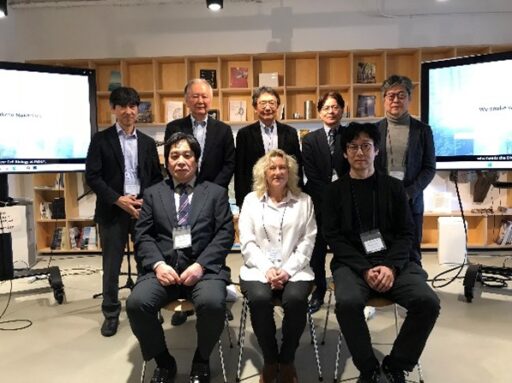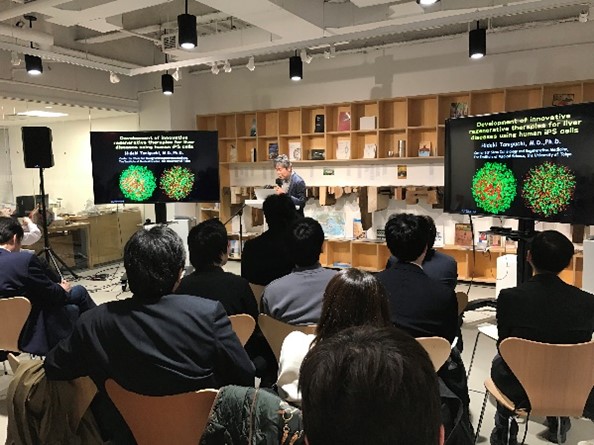The “IMSUT NY Seminar 2025” hosted by the Institute of Medical Science, the University of Tokyo (IMSUT) was held entirely on-site on Friday, March 21, 2025, at the New York office of the University of Tokyo (UTokyoNY) under the theme of “Cutting-edge medical science-from basic research to clinical applications”. Despite being held on a weekday, the seminar was attended by an even larger number of participants than in previous years. By being scheduled in the evening, the event attracted attendees from a wide range of institutions, including universities and research centers in the United States, as well as various companies and organizations from diverse fields.
This third installment of the IMSUT NY Seminar was opened with a welcoming address by Professor Makoto Nakanishi, the Dean of IMSUT. The seminar consisted of three sessions, each featuring distinguished researchers presenting their latest findings. In the first session, Professor Toshifumi Inada gave a lecture on the molecular mechanisms and physiological functions of quality control that recognize and rescue ribosome collision, which is the reality of aberrant mRNA translation. Professor Hiroyasu Furukawa of the Cold Spring Harbor Laboratory then presented his research on functional control by novel antibodies against NMDA-type glutamate receptors (NMDAR). The second session featured Professor Atsushi Iwama, who spoke about promoting hematopoietic regeneration by manipulation of the bone marrow niche. He was followed by Professor Emmanuelle Passegué of Columbia University, who talked about the mechanism underlying how adaptive responses over the life of the organism lead to HSC functional degradation. In the final session, Professor Hideki Taniguchi discussed the development of innovative regenerative therapies for liver diseases using human iPS cells, including the objectives and current clinical status. The seminar concluded with a presentation by Professor Takami Sato from Thomas Jefferson University who introduced new approaches for uveal melanoma treatment.
Each presentation sparked great interest among the participants, leading to highly engaging discussions. The Q&A sessions were so lively that they ran short of time, underscoring the audience’s enthusiastic participation. The seminar concluded with closing remarks from Professor Inada, marking the end of a successful and stimulating event. After the main program, a Post-seminar Discussion was held, offering further opportunities for speakers and attendees to exchange ideas and foster connections. These interactions are likely to lead to future collaborations, making this seminar a key step toward continued international research exchange.
The seminar video will be released shortly!


